Chamoe, also known as yellow Korean melon, is a delightfully sweet fruit enjoyed particularly in Korea, especially as a summer snack among locals. It has health benefits and offers a refreshing, juicy taste perfect for hot weather.
Originating from the southern regions of Korea, chamoe boasts a firm, crisp texture that sets it apart from other melons and has been a staple in Korean cuisine for centuries, dating back to at least the Three Kingdoms Period.
Besides being delicious, chamoe is also a healthy choice as it's low in calories and rich in vitamins and minerals, making it a go-to fruit for those looking to enjoy a tasty snack without compromising their health.
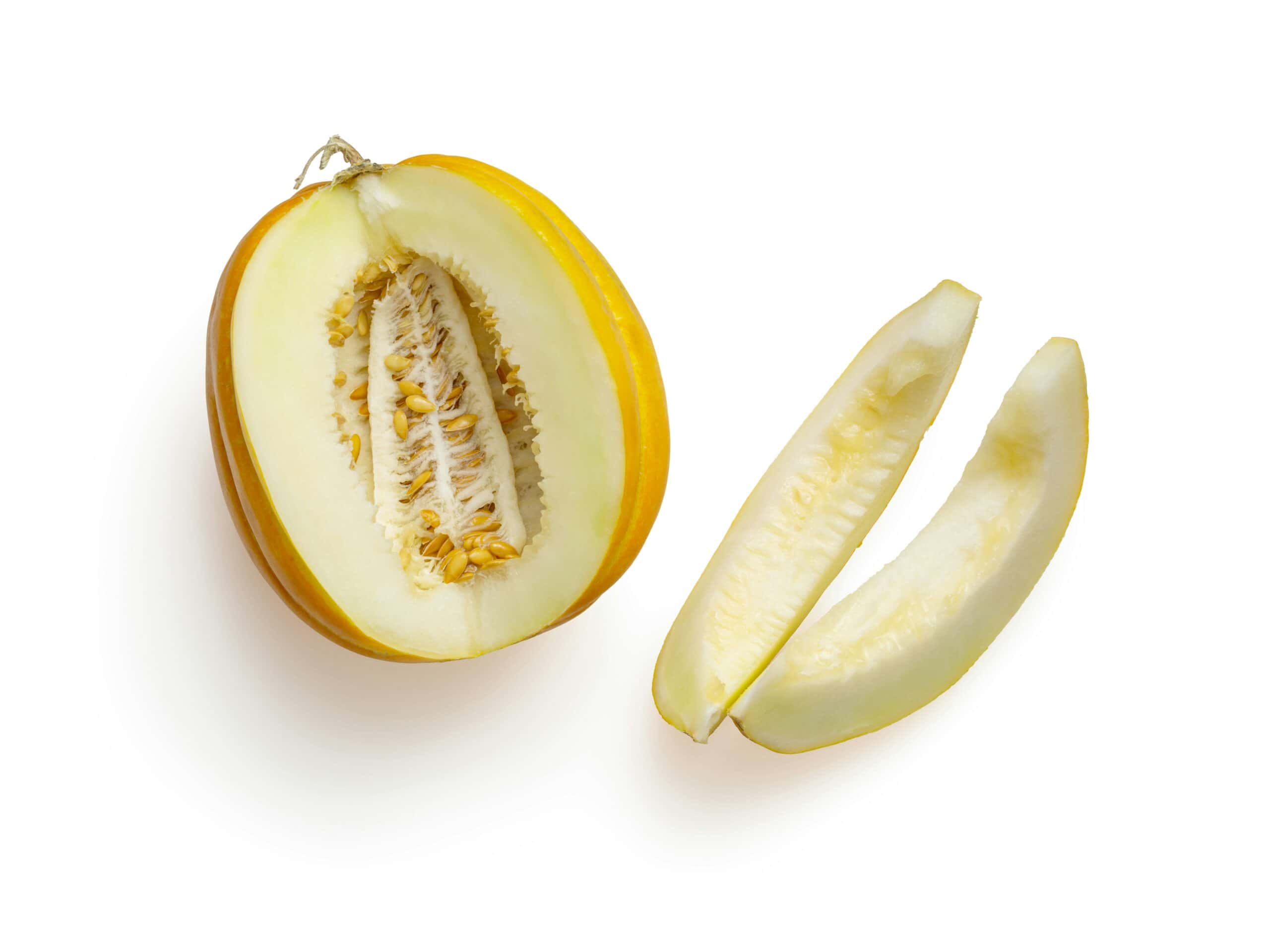
Jump to:
🪴 Botanical Profile
Classification and Nomenclature
Chamoe is a sweet melon from the species Cucumis melo, closely related to other melons like honeydew, cantaloupe, and makuwa. Often called "true cucumber" in Korea, this melon gets its name due to its texture and flavor similarities, which highlight its unique place within the broader family of melons.
These melons, which grow in the summer, are popular for their refreshing taste and have a special place in Korean culture. The name chamoe combines the words "cham," meaning true, and "oe," meaning cucumber, highlighting their cultural significance. Enjoyed in Korea since the Three Kingdoms Period, these melons remain a beloved seasonal treat.
Physical Characteristics
Chamoe melons are easily recognizable by their vibrant yellow color and smooth, unnetted rind, with a typical oval shape and a thin, edible rind. Inside, the melon has crisp white flesh that is both juicy and sweet, offering a delightful contrast to the rind's texture.
The melons are usually about the size of a small cantaloupe, making them the perfect snack size, and the seeds in the center are soft and can be eaten along with the flesh, similar to cucumber seeds. This unique combination of features sets chamoe apart from other melons like honeydew and cantaloupe.

📜 Historical Significance
Origin and Cultivation History
Chamoe is believed to have originated in Eastern India and spread to China and other parts of East Asia through the Silk Road, which played a key role in spreading its cultivation across Asia.
In Korea, chamoe cultivation dates back to the Three Kingdoms Period (57 BC to 668 AD), and by the time of the Joseon Dynasty, it had become a significant part of Korean agriculture, particularly in regions like Seongju, which is renowned for its high-quality chamoe.
In Japan, the Geumssaragi variety, also known as "ginsen makuwa," originates from Toyama and was developed as a traditional vegetable, highlighting the shared agricultural heritage between Korea and Japan.
Cultural References
Chamoe holds a special place in Korean culture, appearing in traditional Korean art, such as the celadon In ancient texts and poems, chamoe is often mentioned as a refreshing summer fruit enjoyed by royals and commoners alike, symbolizing prosperity and good harvest.
-shaped bottle from the Goryeo period, which highlights the melon’s cultural importance over the centuries.
In ancient texts and poems, chamoe is often mentioned as a refreshing summer fruit enjoyed by royals and commoners alike, symbolizing prosperity and good harvest.
The melon’s influence even extends to language, with specific names like "euncheon-chamoe" in Korean, highlighting its cultural relevance and deep connection to Korean history, making chamoe more than just a delicious treat but also a link to the past.
🧑⚕️ Nutritional Value
Vitamins and Minerals
Chamoe is a powerhouse of vitamins and minerals, especially rich in vitamin C, which boosts the immune system, and vitamin A, essential for good vision and skin health. A 100g serving of chamoe also provides around 450 mg of potassium, supporting heart health and maintaining normal blood pressure.
Additionally, it contains small amounts of calcium and iron, which support healthy bones and improve oxygen transport in the body, while also providing dietary fiber that aids digestion and promotes a feeling of fullness.
Health Benefits
Consuming chamoe offers several health benefits, as its high vitamin C content helps combat fatigue, enhances skin brightness, and acts as an antioxidant to protect cells from damage. Additionally, with about 90% water content, chamoe keeps you hydrated, making it especially beneficial during hot summer days.
Melon is low in calories, roughly 30 kcal per 100g, making it a guilt-free snack for those watching their weight, while Chamoe's potassium helps prevent muscle cramps and supports heart health.
Dietary fiber, which improves digestion and helps maintain a healthy weight, can be found in Chamoe, a low-calorie, nutritious fruit that offers a range of health benefits.
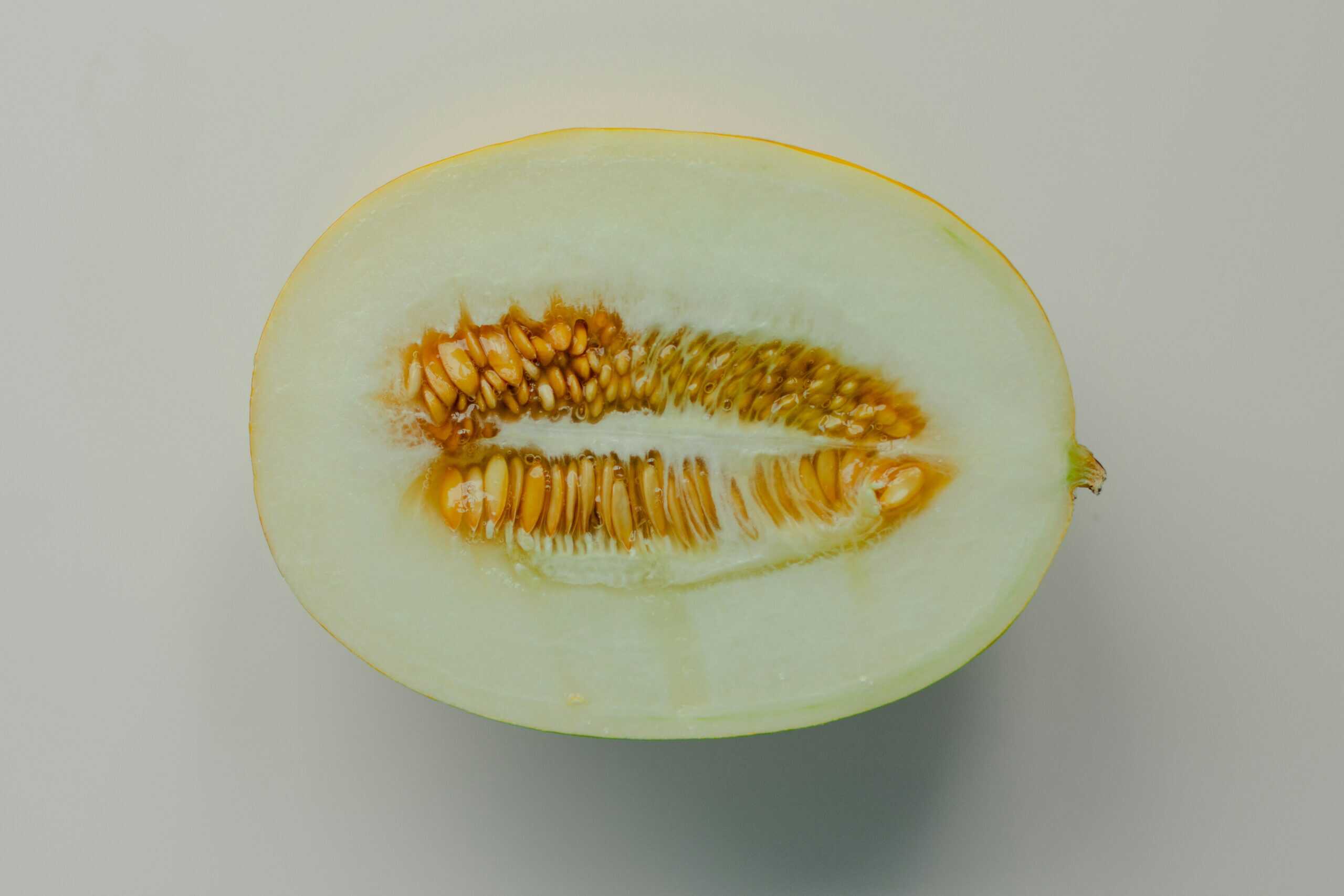
👨🍳 Culinary Uses
Traditional Korean Dishes
Chamoe, a fruit enjoyed in Korea for hundreds of years, is especially popular during the hot summer months and is often sliced and served chilled as a simple, refreshing snack.
The sweet, crispy texture makes it a favorite as a standalone fruit. Chamoe is also sometimes incorporated into kimchi, adding a subtle sweetness to the traditional spicy fermented dish.
Another traditional use is in banchan (side dishes), where it's thinly sliced and served as a light, tangy treat to complement savory meals.
Its mild taste pairs well with braised meats and other rich dishes, providing a refreshing balance. Though it is mainly eaten raw, on special occasions, chamoe can be found in more intricate preparations that celebrate the fruit's unique flavor and crunch.
Incorporating Chamoe in Recipes
Chamoe isn't limited to Korean cuisine; its sweet, melon-like flavor can be a delightful addition to various recipes. For a refreshing summer salad, try slicing chamoe and combining it with greens, nuts, and a light vinaigrette—perfect for hot days and a fresh twist on traditional salad ingredients.
Desserts are another great way to enjoy chamoe, as it pairs well with pear and can be added to a fruit salad for a mix of textures and flavors. Try stirring chamoe chunks into yogurt or topping it with honey for a simple yet delicious option. For a fun treat, consider creating chamoe-infused ice cream or sorbet to elevate your dessert experience.
Chamoe's texture and sweetness can also benefit salsas. Dice the melon and mix it with tomatoes, onions, cilantro, and a squeeze of lime for a refreshing salsa that pairs beautifully with grilled fish or chicken.
🫙 Buying and Storage Tips
Selecting the Perfect Melon
To choose the best chamoe, head to local markets or grocery stores where the freshest produce is available and look for melons that are heavy for their size and have vibrant yellow skin with distinct white stripes.
Avoid melons with soft spots or blemishes and ensure they feel firm when gently pressed, but not rock hard. A slight give indicates ripeness, making them ideal for immediate consumption.
Smell the stem end of the melon, as a sweet fragrance suggests it's ripe and ready to eat. If you're unsure, ask the store staff for assistance, as they often have great tips on picking the best fruits.
Preservation Methods
Store chamoe properly to keep it fresh. If the melon isn't ripe, leave it at room temperature for a day or two. Once ripe, transfer it to the refrigerator to extend its freshness.
Keep chamoe in the fridge's crisper drawer, where the higher humidity helps maintain its moisture and crispness, allowing it to last up to a week.
For longer storage, cut the melon into slices or cubes and store them in an airtight container in the fridge to prevent drying out and keep it ready for a quick snack. Avoid stacking multiple containers too tightly to ensure proper air circulation.
🔪 Preparation Techniques
Peeling and Cutting
To start, scrub the chamoe under running water to remove any dirt, then place it on a cutting board and carefully slice off the ends. Then, use a sharp knife to cut the chamoe lengthwise.
Inside, a cavity filled with seeds will be visible. Use a spoon to scoop out the seeds and discard them. The skin is edible but can be tough and bitter, so it's often peeled off using a knife or vegetable peeler.
If you prefer, the skin can be left on, especially if the slices will be chilled later on. Once peeled, cut the melon halves into smaller, bite-sized slices for easy eating.
Serving Suggestions
Chamoe is a versatile fruit that can be served in many delightful ways, and for a refreshing summer treat, you can chill the slices in a bowl of ice water before serving, making them even more enjoyable on a hot day.
Another option is to sprinkle a little salt or squeeze some lime juice on the melon slices to enhance their sweetness, as this combination brings out the natural flavor of the fruit. Chamoe also pairs well with other fruits like kiwi, allowing you to create a colorful and tasty fruit salad that's perfect for any occasion.

🍉 Varieties and Related Fruits
Comparing with Other Melons
Chamoe belongs to the gourd family, making it a close relative to muskmelons, honeydew melons, and watermelons. While muskmelons and honeydews are softer and juicier, chamoe stands out with its firmer, crisper texture and milder sweetness, making it a refreshing alternative to honeydew or cantaloupe.
Conversely, watermelons offer a vastly different experience with their high water content and rich red flesh. Chamoe's texture is more akin to a cucumber, but it has a sweetness that's unique to itself.
Here's a quick comparison:
| Melon Type | Texture | Sweetness Level | Color |
|---|---|---|---|
| Chamoe | Crisp | Mild | Yellow with White Stripes |
| Muskmelon | Soft | High | Orange to Green |
| Honeydew | Soft | High | Green to White |
| Watermelon | Juicy | High | Red or Pink |
Regional Varieties
Different regions in South Korea are known for specific types of chamoe, with the geumssaragi-euncheon variety standing out due to its distinctive white-striped appearance and exceptional sweetness, while the euncheon-chamoe, another popular type, is commonly found in local markets during summer.
These varieties might differ slightly in sweetness and texture, offering a diverse chamoe experience for enthusiasts. Beyond South Korea, chamoe has also made its way to places like Hawaii and California, where it is grown to meet the growing demand for this unique melon.
Each region cultivates chamoe with slight variations, enhancing its popularity as a staple summertime treat enjoyed by both first-timers and those familiar with its diverse types and flavors.
🍈 Growing Your Own Chamoe
Gardening Tips for Chamoe
For a successful chamoe garden, start by choosing a sunny spot, as chamoe requires 6-8 hours of sunlight daily. Plant the seeds in hills, spacing them about 3-4 feet apart to give each plant plenty of room to spread.
Watering is crucial, so aim for a consistent schedule, especially during the early growth stages, and keep the soil moist but not waterlogged, as overwatering can lead to root rot.
Regularly check for pests like aphids and cucumber beetles, and use organic insecticides to protect your plants without harmful chemicals. Prune the plants to encourage fruit growth, and make sure to remove any diseased leaves immediately to maintain plant health.
Soil and Climate Conditions
Chamoe grows best in well-drained, sandy loam soil. Before planting, test the soil to ensure a pH of 6.0-6.5. Adding compost or aged manure can improve soil quality and provide essential nutrients.
Chamoe prefers warm and sub-temperate climates. North Gyeongsang Province in South Korea is ideal, but it can grow well in similar regions. Plant chamoe after the last frost, when temperatures are consistently above 70°F (21°C).
A trellis can help manage plant growth and protect the fruit from ground moisture. Mulching around the plants helps retain soil moisture and reduce weeds.
🧃 Creative Uses Beyond Cuisine
Chamoe in Home Remedies
Chamoe is known for its health benefits. It's often used in remedies to help manage blood pressure and relieve constipation. The melon pulp is rich in vitamins and minerals, making it an excellent natural remedy.
Some people use chamoe pulp to make a soothing face mask, taking advantage of its hydrating properties. Chamoe pulp can be mixed with honey to create a gentle, moisturizing mask.
Chamoe juice's refreshing taste is said to help hydrate the body, which is particularly beneficial during hot months. It can be sipped or added to herbal teas for an extra boost.
Decoration and Aesthetic Use
Chamoe's vibrant yellow skin makes it a lovely decoration for summer tables. When arranged in a fruit bowl, its bright color adds a cheerful touch to any setting.
Some also use chamoe in floral arrangements, as its unique shape and hue contrast sharply with traditional flowers and greens, bringing a touch of Korean culture to decorative pieces.
Carved chamoes can also be used in creative candle holders or vases. Hollowed-out melons, filled with small flowers or candles, provide an organic and attractive decorative element for home interiors.
❓ Frequently Asked Questions
A ripe Korean melon is bright yellow with evenly spaced white lines. When gently pressed, the skin should feel firm yet a little soft. The aroma around the stem area should be sweet and fragrant, indicating ripeness.
Korean melons are low in calories and water content, making them a refreshing and hydrating snack. They are rich in vitamins A and C, which support eye health and boost the immune system. The fiber content aids digestion and promotes gut health.
To eat a Korean melon, start by washing it thoroughly. Cut off both ends, then slice it in half lengthwise. Scoop out the seeds from the center. The flesh can be sliced or cubed and eaten fresh, added to salads, or used in desserts. The skin is edible but often peeled for a smoother texture.
Korean melons have a mild, sweet taste with a hint of cucumber flavor. The flesh is crisp and juicy, offering a refreshing bite. Unlike some other melons, chamoe does not have a robust and overwhelming sweetness, making it a pleasant addition to various dishes.
Korean melons are more diminutive and have a distinct oval shape compared to traditional melons like cantaloupes or watermelons. Their bright yellow skin with white stripes sets them apart visually. The flesh is firmer and less juicy than other melons, offering a unique texture.
Korean melon seeds can be scooped out and washed thoroughly. After drying them, the seeds can be roasted with a bit of salt for a crunchy snack. They can also be added to salads or trail mixes for extra nutrition and texture.

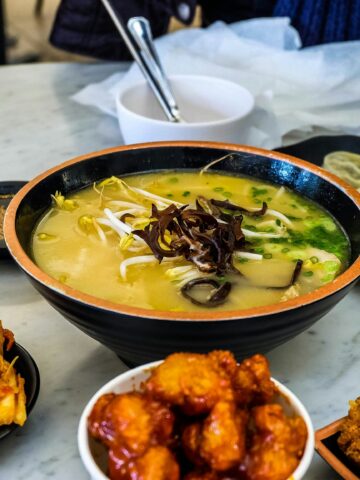
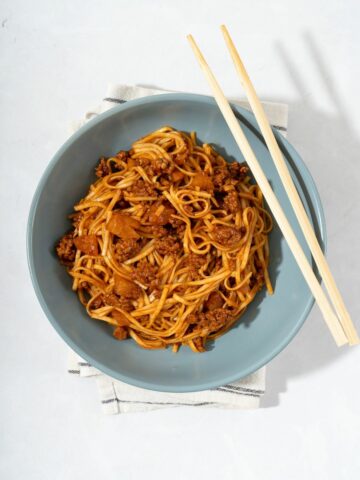
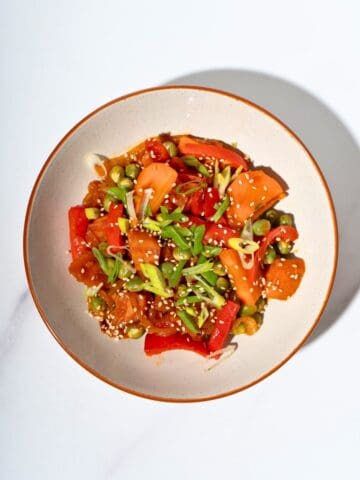
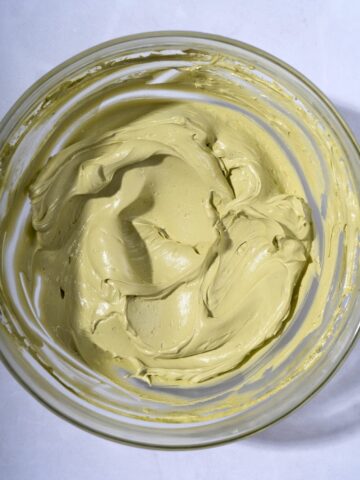
Comments
No Comments